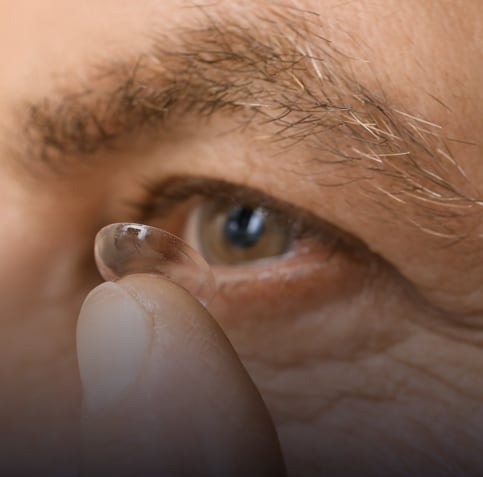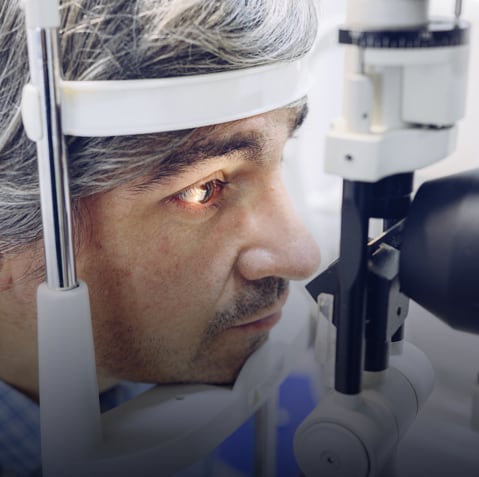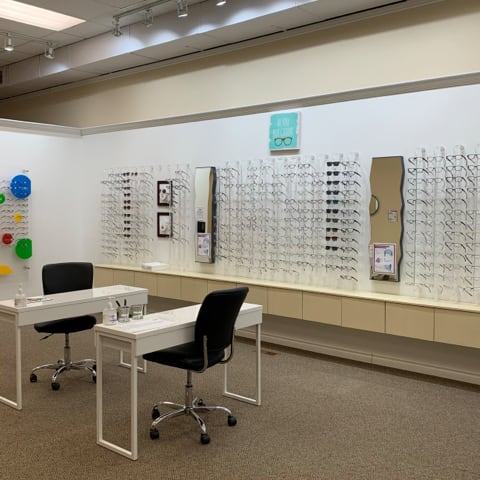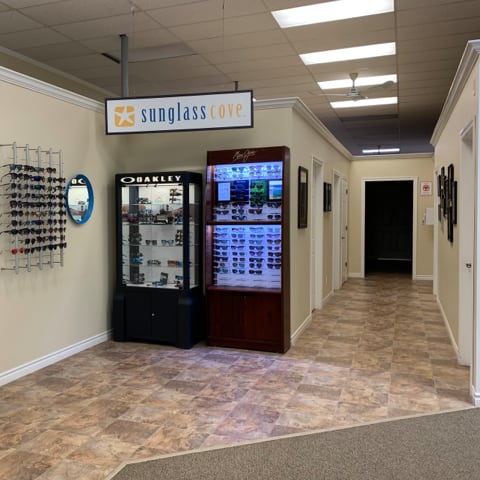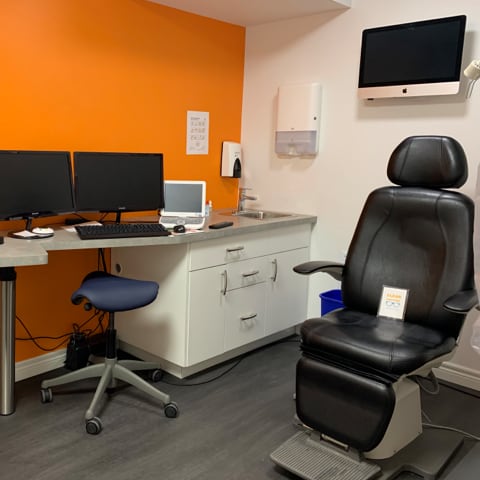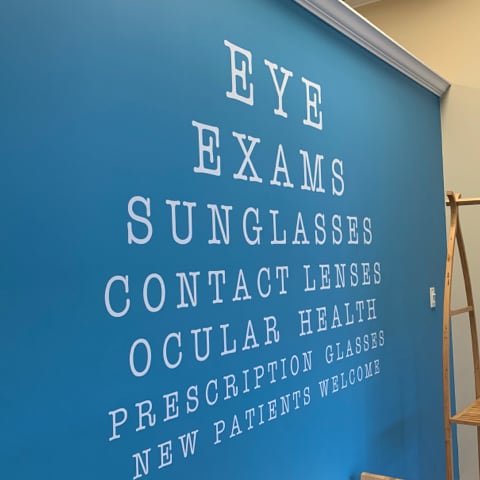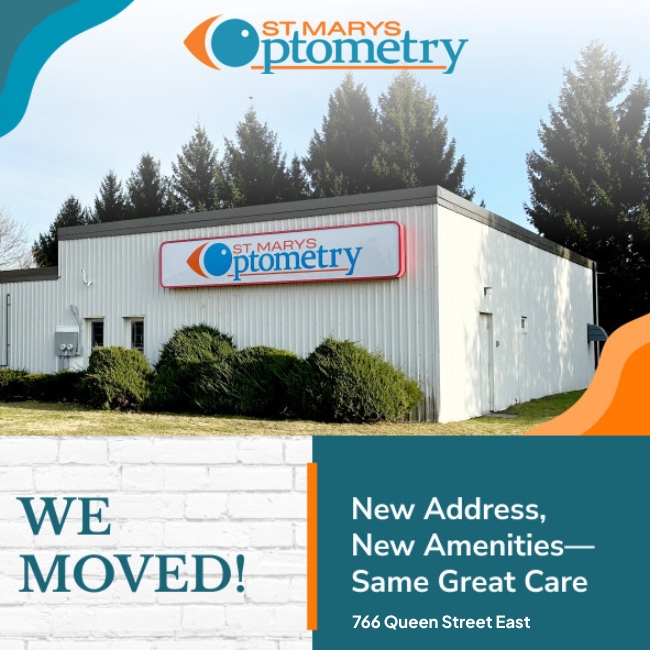There’s More to Sight than What You See
At St. Marys Optometry, we dedicate ourselves to helping you achieve the clearest vision possible, but there’s more to your sight than what you see.
Our comprehensive processes help us look deep into your eye health, allowing us to detect several eye diseases and conditions. By spotting these issues as early as possible, we can create unique strategies to help preserve your eye health and vision.
Our mission is to support your healthy clear sight for life. Learn more about our techniques by booking an appointment with our awesome team today. We can’t wait to see you!

Why Eye Exams Are Important
Whether you’re looking for help achieving clearer vision or managing your eye health, an eye exam is always the first step.
We tailor your comprehensive and compassionate eye exam process to fit your unique needs and detect issues you may have a higher risk of developing. Even if you believe your eyes are healthy, several different problems can still develop without presenting noticeable symptoms during their early stages. However, they could cause permanent vision loss if they progress far enough.
We can detect these concerns by looking into the structures that support your sight. From what we find, we can recommend a strategy unique to your needs.

Glaucoma
A common eye disease people can develop is glaucoma. Glaucoma is an umbrella term for several eye diseases that can affect your optic nerve over time that can eventually cause vision loss.
We can detect the types of glaucoma by examining your optic disc during an eye exam or measuring your internal eye pressure, also known as intraocular pressure (IOP).
We measure your IOP levels using a technique called tonometry. At St. Marys Optometry, we use Goldmann applanation tonometry and iCare handheld tonometry, which both measure your IOP levels by placing a small probe against your eye surface and calculating the resistance it faces.
However, not all forms of glaucoma can affect your IOP levels, and some might happen rapidly, causing emergency symptoms. If you have a risk of glaucoma, it’s important to have regular eye exams.
Open-Angle Glaucoma
Open-angle glaucoma is the most common version of this disease. It can develop when tiny blockages form in your eye’s drainage system, preventing your eye’s internal fluids from leaving, or if you have too much fluid in your eyes.
Over time, the fluids can accumulate and place pressure on your optic disc. This pressure can slowly affect the optic disc which can lead to vision loss.
Open-angle glaucoma typically develops slowly, and it may not show symptoms during its early stages. Still, our team can detect it by measuring your IOP or observing your optic nerve.
Closed-Angle Glaucoma
Closed-angle glaucoma is a version of the disease that could develop rapidly, causing sudden emergency symptoms like redness, eye pain, blurry vision, nausea, headaches, and sudden vision loss.
This issue can occur when the drainage canal between your iris and cornea closes, preventing fluids from draining out of your eye. As a result, your IOP levels can rise rapidly, causing emergency symptoms.
If you risk developing glaucoma and experience sudden vision and eye problems, please contact us immediately for an emergency appointment.
Normal-Tension Glaucoma
Normal-tension glaucoma is a unique version of the disease that can develop even when your IOP levels are normal. We can detect it by observing your optic disc during an eye exam.
Age-Related Macular Degeneration
Dry Macular Degeneration
Dry macular degeneration, or dry AMD, is the most common version of the disease. It can develop as you age, and you may not notice its symptoms in its earliest stages. However, it could cause permanent vision loss if it progresses far enough.
Dry AMD occurs when fatty deposits called drusen develop under your macula. Drusen can slowly thin your macula over time, eventually causing vision distortions or permanent vision loss.
Wet Macular Degeneration
Wet macular degeneration, or wet AMD, is less common than dry AMD, but it’s responsible for almost 90% of all AMD-related vision loss.
Wet AMD can occur when abnormal blood vessels under your macula develop over time. These vessels can break and leak fluids, causing the macula to swell. As a result, you may experience sudden symptoms like blurriness, visual distortions, and permanent vision loss.
If you risk developing AMD and experience sudden vision problems, please get in touch with our team for an emergency appointment.
Age-related macular degeneration (AMD) is among the most common causes of vision loss in adults 55 and older.
AMD affects a part of your retina called the macula. The macula is responsible for providing the crisp central vision you use to see fine details and read. Still, AMD can affect your central vision quality and possibly lead to permanent vision loss.
There are 2 types of AMD, and we can detect them both by observing your macula during a comprehensive eye exam.
Cataracts
Cataracts are a common eye condition that many adults can develop as they get older. Without treatment, cataracts could cause blindness, but cataract surgery could help restore your vision.
Cataracts can develop as proteins in your eye’s lens clump together as you age. As a result, your lens may become hazy or milky, which can obstruct how much light enters your eye.
We can help correct early cataract-related vision problems by prescribing contacts or glasses, but cataract surgery is the only way to treat the issue. Cataract surgery replaces the cataract lens with an artificial one, restoring your vision.
Are You At Risk for an Eye Disease or Condition?
Because so many eye diseases and conditions can develop with little to no early symptoms, it’s important to have an eye doctor detect these problems during your regular eye exams.
The risk of developing these problems can increase as you age. Still, you may also have a higher risk for eye disease if you smoke, drink alcohol excessively, have poor dietary habits, or have a family history of health conditions or eye issues.
If you’re unsure how eye disease may affect you, book an appointment with our team today, and we can help you support your eye health and preserve your vision!
Our location
Find Us
We’re on the east side of town, beside the McDonald’s and Esso plaza and across from St. Marys Golf and Country Club. You can park in our parking lot, and our clinic is accessible off of Industrial Road.
Contact Information
- Phone: 519-284-4144
- Email: [email protected]
(Do not send personal health information by email.)
Address
- 766 Queen Street East
- St. Marys, ON N4X 1G2
When We’re Open
- Monday: 8:00 AM – 4:00 PM
- Tuesday: 1:00 PM – 7:00 PM
- Wednesday: 8:00 AM – 4:00 PM
- Thursday: 8:00 AM – 4:00 PM
- Friday: 8:00 AM – 3:30 PM
- Saturday: Closed
- Sunday: Closed
Our Brands









